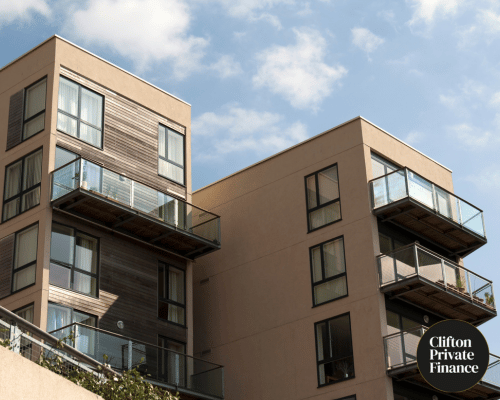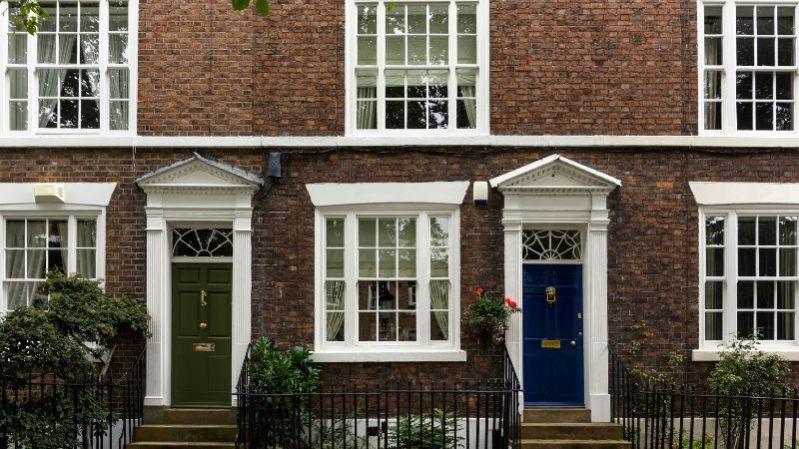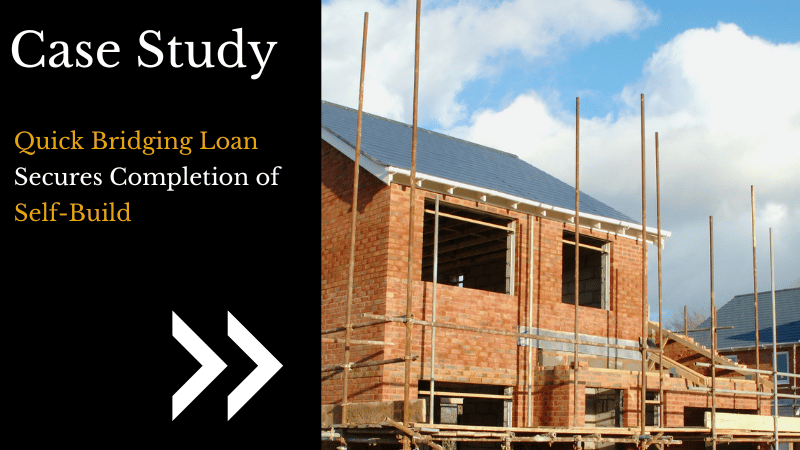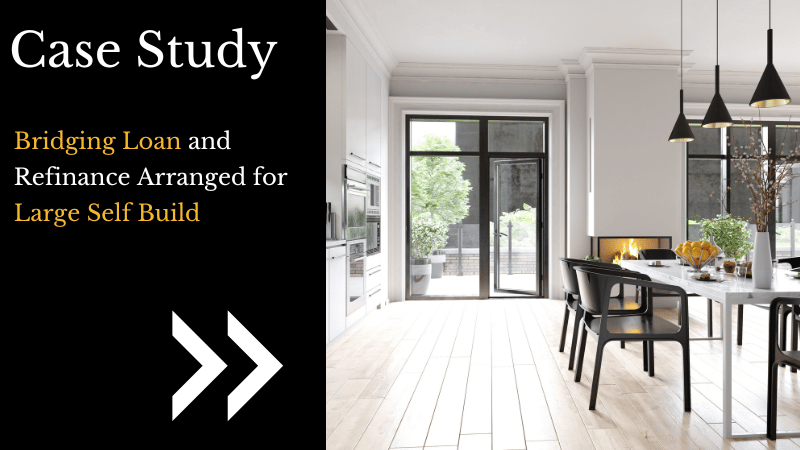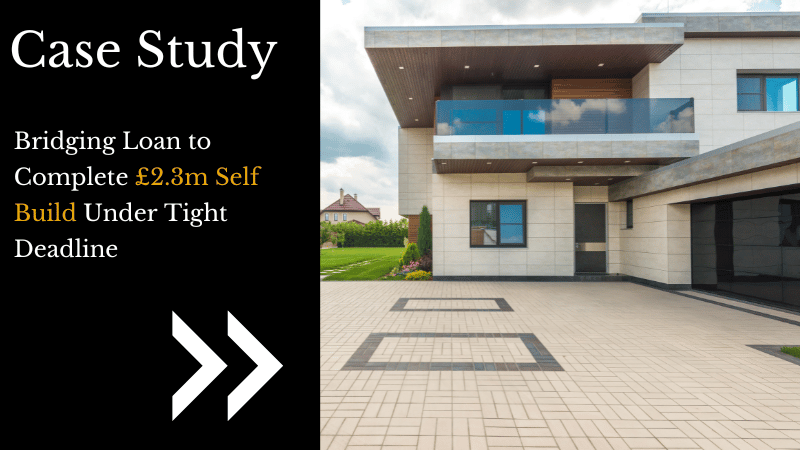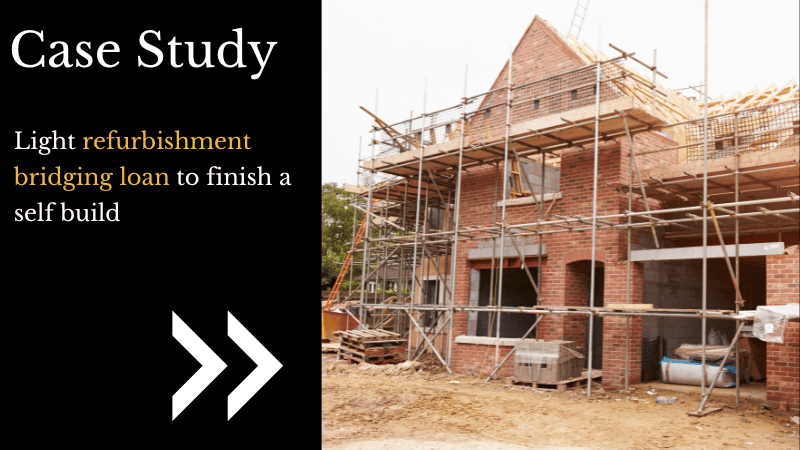When you are looking to build your own house, funding is essential. From paying architects for comprehensive plans, through buying land, to the final touches from quality decorators, there’s a lot than has to be handled and budgeted for - having the right finance solution in place make all the difference.
For most looking for finance, a specialist self-build mortgage provides a stable structure of staged payments to meet needs, however, there are many situations where a self-build mortgage falls short. Thankfully, bridging finance is available to step up and fill the gap.
Key Takeaways
- Bridging finance offers flexibility that self-build mortgages cannot provide.
- Use bridging finance to seize opportunities and remove barriers to building the perfect home.
- Bridging finance is a secured form of funding that uses property as security to maximise capital funding.
- Partnering with Clifton Private Finance offers you the best chance to get a perfect bridging finance deal.
What is Bridging Finance?
At Clifton Private Finance, we work tirelessly for our clients, including by writing comprehensive guides to help you make an informed decision. To learn all about bridging finance and how it can help you, explore our Guide to Bridging Loans.
The Challenges with Self-Build Mortgages
There’s no doubt that self-build mortgages are a strong finance solution that are suitable for many self-build projects. However, mortgage lenders are quite strict and require adherence to multiple criteria including:
- Good personal credit history
- Strict affordability checks and stress tests
- Detailed architectural plans
- Full planning permission in place
- Regular inspections for quality control
- Structural insurance
While these conditions are reasonable and support responsible self-build projects, they are also restrictive and can lead to frustrations and delays. Additionally, self-build mortgages release funds in a structured staged process, often paid in arrears, which can further restrict flexibility and lead to cash flow problems.
Bridging finance neatly sidesteps many of the downsides of self-build mortgages, providing flexibility and buying power just where it’s needed.
When to Use Bridging Finance for Self-Build Projects
Bridging finance can be used as either your primary first-charge funding, or alongside a self-build mortgage as second-charge finance. This adaptability means financial support is always there as you need it.
Consider first-charge bridging finance if:
- You are needing to move quickly - perhaps to secure land ahead of other potential buyers, or to complete to a deadline.
- You are building with non-standard materials, which are unsuitable for a mortgage until the property is complete.
- You are buying land at auction and need to meet tight deadlines for purchase completion.
- You already own land and want to start building before a mortgage can be approved.
- You have temporary credit or income complications that make a mortgage impossible, for example, taking a year from work to undertake the work before returning to full-time employment.
- You will sell your old house to pay for the new one once you can move in.
Use second-charge bridging finance if:
- Your second-charge mortgage is causing cash flow complications.
- Your project runs above budget and more capital is required.
- Construction delays cause financing difficulties.
The Exit Strategy for Self-Builds
Your exit strategy for the bridging finance is key. Most individuals look to a self-build because they are creating a perfect dream home for themselves, rather than as an investor or developer, which means exit strategies based around the sale of the property are less common than those that rely on mortgaging. The main exit strategies for self-builds are:
- Mortgaging - A full mortgage to pay off the bridging finance once conditions for a mortgage are met.
- Sale of existing property - Moving out of your old home and putting it on the market as soon as you can live in the new build, clearing the bridging finance with the proceeds.
- Combination sale / mortgage - A combination of the two methods above, for self-builds that cost more than the market value of the old home.
- Buy-to-let mortgage - If you wish to turn the self-build into a rental, then a BTL mortgage rather than a residential one can be obtained to repay the bridging finance. A full business plan including projected rental yield will be required.
- Sale of the self-build - If the project is intended as an investment, then its sale would need to cover the full bridging finance, interest, and any other costs, as well as provide profit to make a return on the investment.
- Sale of other property - Other property, for example holiday homes or previous buy-to-lets, may be sold to cover the bridging finance.
It is helpful to have a mortgage agreement in principle before starting your self-build project if this is your chosen exit route. This will give you the confidence to move forward with your bridging loan without fearing that the planned exit will fail, forcing the sale of the property or a need for emergency (and potentially high-cost) refinancing.
If you are planning a new-build using non-standard materials, it is essential that you discuss this with a specialist before moving ahead with the bridging finance. At Clifton Private Finance, our bridging and mortgage teams will work together to ensure you have a suitable mortgage lender in place before bridging finance is finalised to provide you with a confident and realistic exit strategy.
The Size of Self-Build Bridging Finance
Unlike a mortgage, bridging finance for a self-build is not limited by your salary, instead, its primary calculation is based on loan-to-value (LTV) and security. When you are planning a self-build, the security can vary:
- Existing property - The equity you hold in existing property, such as your current home, can be used as security for the self-build.
- Land value - The land you own or are purchasing to build on forms a core to the security.
- Gross development value (GDV) - Specialist lenders will be willing to base the bridging finance on the final expected market value of the self-build once it is completed. They will work from your architectural plans and conduct a valuation accordingly.
The LTV you are offered will depend on multiple factors, including the plans and preparation, your experience in project management and construction, and the lender preferences. Working with us at Clifton Private Finance will give you the support and backing you need to maximise your potential finance. We will match you with lenders who best align with your plans, as well as help you develop an application that increases the chances of acceptance. New-build bridging finance can be obtained for up to 70% LTV of the full security.
When to Get Bridging Finance for a Self-Build
Timing your bridging finance is important, as interest costs are kept to a minimum by only having the money when you need it. Some lenders will offer staged bridging finance for this reason, parcelling out the bridging finance at pre-defined periods to keep interest costs low. Whether you want staged bridging finance or the power of having the full sum up front will depend on your project schedule and cash flow planning - it’s worth discussing this fine nuance with your Clifton Private Finance advisor.
The first stage of obtaining bridging finance for your self-build comes when you contact us at Clifton Private Finance. As a specialist bridging broker, we will match you to a lender who meets your unique needs, starting negotiations at an early stage to give you the time needed to finalise your plans.
You may already have a plot of land in mind, or have architectural plans ready. We will discuss your situation with you and determine the right finance for your self-build project. This may be bridging finance, but it could also be a self-build mortgage if more suitable.
With our help, the application process will be smooth. Bridging finance is exceptionally rapid, with the time from initial contact to the release of funds happening in a short number of weeks. You will soon have the purchasing power you need to purchase the land and put the first phase of construction into order.
Bridging Finance to Solve Self-Build Problems
If your self-build project is already underway and financial issues have arisen, bridging finance can smooth over problems and get you back on track. Speak to a Clifton Private Finance specialist if:
- You need money quickly to continue construction work before your next self-build mortgage payment is released.
- You have gone over-budget and need additional finance to see the project to completion.
- An unexpected problem has occurred that needs immediate funding to resolve.
We can move rapidly to secure you the bridging finance that you need.
Bridging Finance Help From Clifton Private Finance
We have a team of dedicated bridging finance specialist with extensive experience and know-how in funding self-build projects. By partnering with us, you will free yourself from worry and move forward unhindered. We have long-established relationships with the premium bridging finance lenders in the UK and can make sure your lender understands your precise circumstances, taking you into account as an individual case and not just relying on automatic computer driven responses.
Our team can advise you on the best financial solution and connect you with the most suitable lender for your circumstances. To see what we can do for you, call us at 0117 205 4827 or book a consultation below.

